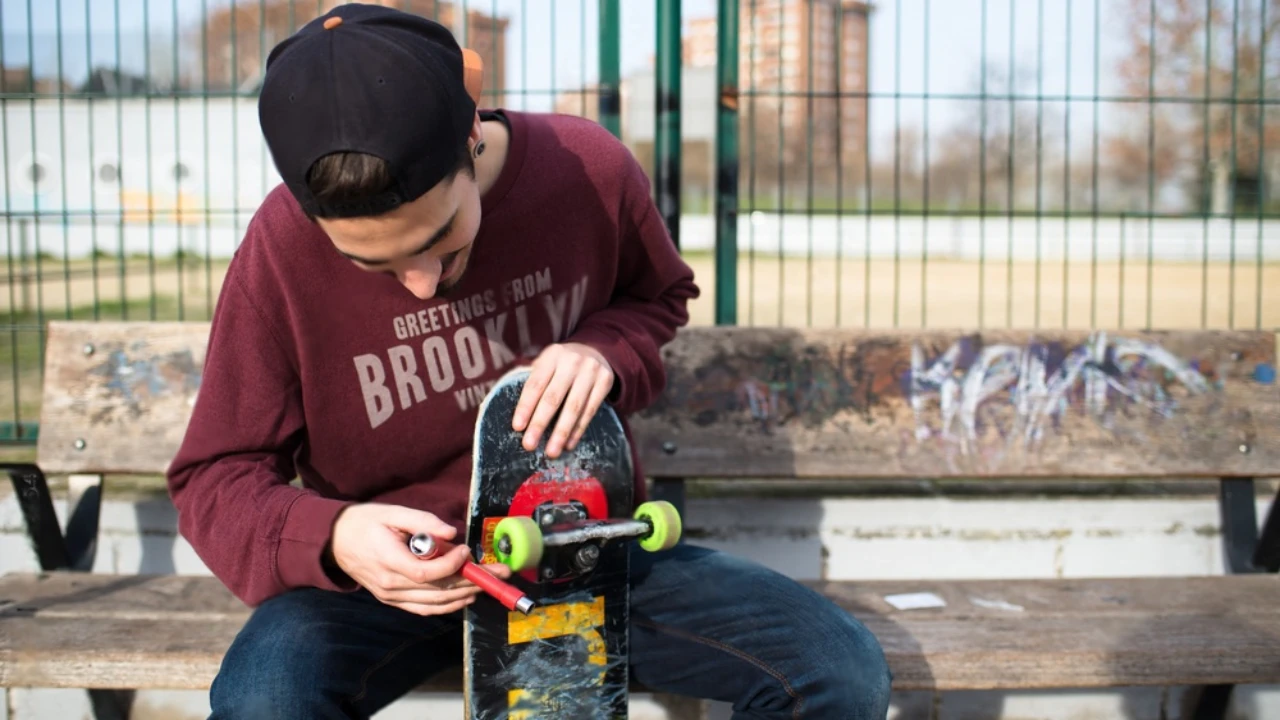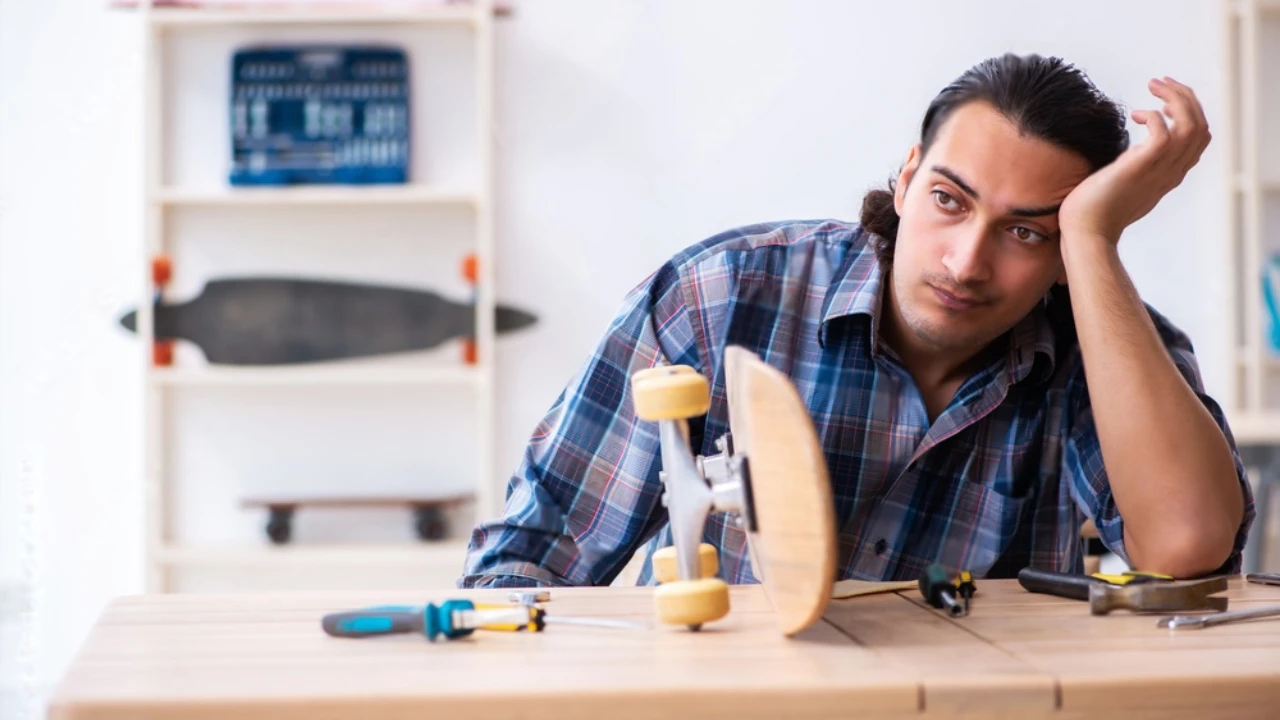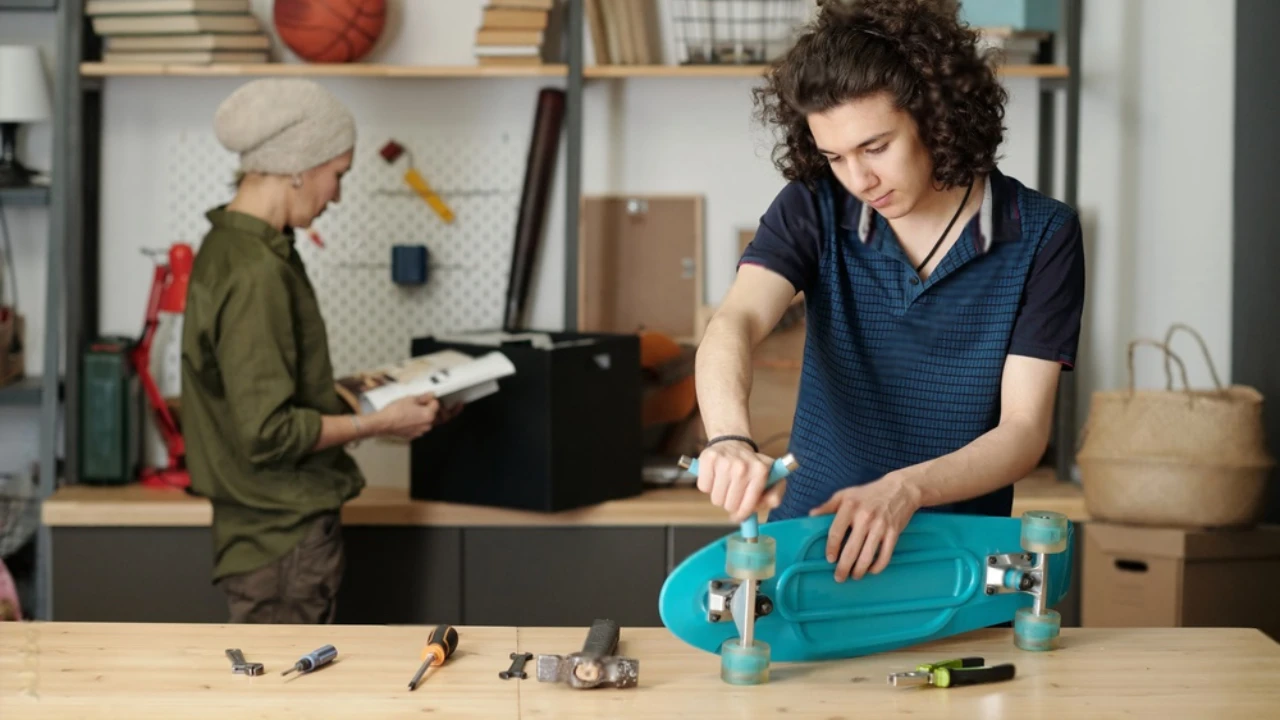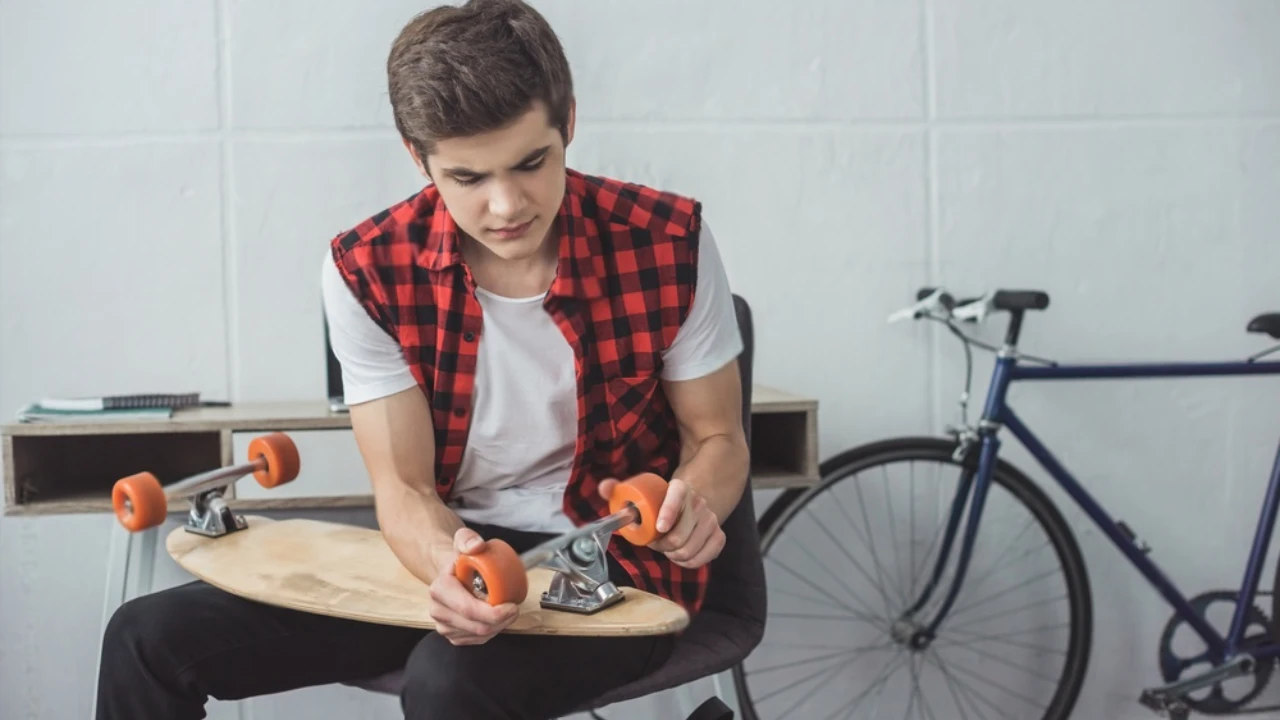The unmistakable sound of a creaking skateboard can turn a smooth ride into a source of annoyance and concern, prompting many skateboarders to ask, “Why is my skateboard creaking?” This common question points to a range of potential issues, from wear and tear on the skateboard’s components to the need for regular maintenance and adjustments.
In this comprehensive guide, we delve into the various causes of skateboard creaks and provide detailed solutions to not only silence the noise but also enhance the performance and longevity of your skateboard. Understanding the root causes of creaking and implementing the recommended solutions can transform your skateboarding experience, ensuring a smoother, safer ride. Whether you’re a seasoned skateboarder or new to the sport, addressing the question of “why is my skateboard creaking” is crucial for maintaining your equipment and enjoying your rides to the fullest.
Table of Contents
Common reasons behind – why is my skateboard creaking

1. Truck Troubles: A Primary Cause of Creaks
The trucks of a skateboard, which attach the wheels to the deck, are often the main culprits when it comes to creaking noises. The issue typically arises from the bushings – the rubber-like components inside the trucks that allow for smooth turning and provide cushioning. Over time, these bushings can wear out, harden, or become compressed, leading to creaking sounds during movement.
To solve this, assess the condition of the bushings. If they appear worn or damaged, replacing them is your best bet. When selecting new bushings, consider your weight and riding style, as these factors influence the hardness (durometer) you should choose. Softer bushings are better for lighter riders or those seeking tighter turns, while harder bushings suit heavier riders or those preferring more stability.
Proper installation is key – ensure the bushings are seated correctly and the kingpin nut is tightened to the right tension, allowing for smooth turns without over-tightening.
2. Bearing Burdens: The Silent Squeakers
Bearings, though small, play a significant role in your skateboard’s operation by enabling the wheels to spin freely. Dirt, debris, or rust can infiltrate bearings, leading to creaking or squeaking noises. Regular maintenance is crucial to prevent this. Cleaning your bearings involves removing them from the wheels, wiping away dirt and old lubricant, and then soaking them in a cleaning solution. After drying, apply a few drops of lubricant designed for skateboard bearings before reassembling.
Don’t overlook the importance of quality bearings. Investing in high-quality bearings not only reduces the likelihood of creaks but also enhances your ride’s smoothness and speed. Remember, prevention is better than cure; regular cleaning and lubrication can significantly extend your bearings’ lifespan and performance.
3. Deck Dynamics: Unseen Issues
The skateboard deck itself can sometimes be the source of creaking noises. This is less common but can occur due to the natural flex and stress placed on the deck during riding. Cracks or splits in the wood, although minor and often unnoticed, can create noise, especially in older boards or those subjected to heavy use.
Inspect your deck closely for any signs of damage. While small cracks may not immediately affect your board’s structural integrity, they can lead to bigger issues over time. If the deck is significantly damaged, replacing it is the safest option. For minor issues, tightening the trucks and ensuring all hardware is secure can minimize noise. However, be mindful not to overtighten, as this can strip the threads or crack the deck.
4. Pivot Cups and Other Miscellaneous Causes
The pivot cup, a small component in the truck that holds the pivot point of the hanger, can also lead to creaking if it becomes worn or dirty. Applying a lubricant like silicone spray or even a small piece of wax can alleviate this issue. Similarly, loose hardware or components not properly fitted can cause noise. Regularly check and tighten all parts of your skateboard to prevent this.
This article explores the dangers associated with riding a creaking skateboard and emphasizes the importance of addressing these sounds promptly.
5. Creaking as a Warning Sign
The creaking sound from a skateboard often indicates that certain parts are not functioning correctly or are under undue stress. This noise serves as an early warning system, alerting riders that maintenance or a closer inspection is needed. Ignoring these sounds can lead to component failure at critical moments, such as during a trick or while navigating traffic, which could result in accidents or injuries.
6. Truck Issues and Stability Concerns
One common cause of creaking is issues with the skateboard’s trucks, including worn-out bushings or loose components. Compromised trucks can affect the skateboard’s turning radius and responsiveness. In extreme cases, this can lead to the rider losing control of the skateboard, increasing the risk of falls and collisions. Ensuring trucks are properly maintained and components are securely fastened can mitigate these risks.
7. Bearing Failures: A Silent Threat
Bearings in poor condition can also lead to creaking noises. While they might seem less critical than other parts, bearings are essential for the smooth operation of the skateboard’s wheels. Damaged or dirty bearings can seize or malfunction, causing sudden stops or uneven rolling. This unpredictability can be particularly dangerous at high speeds or on busy streets, where precise control over the skateboard is vital for safety.
8. Deck Integrity: The Foundation of Safety
A creaking noise emanating from the skateboard deck might indicate structural weaknesses, such as cracks or splits. Riding on a compromised deck not only risks sudden breakage but also can affect the distribution of weight and balance, making it difficult to perform maneuvers safely. Regular inspections of the deck can help identify potential problems before they lead to dangerous situations.
Describe the drawbacks of creaking skateboard for a rider

Riding a skateboard that creaks not only interrupts the smoothness of your ride but also presents several drawbacks for the rider. These disadvantages range from reduced performance and safety concerns to potential long-term damage to the skateboard. Understanding these drawbacks can emphasize the importance of regular maintenance and the need to address creaking sounds promptly.
Decreased Performance and Ride Quality
One of the immediate drawbacks of a creaking skateboard is the noticeable drop in performance. The creaking noise often indicates friction or resistance in parts where there should be smooth movement, such as the trucks or bearings. This can lead to a less responsive ride, making it harder to execute turns, tricks, or maneuvers with precision. The overall ride quality suffers, as the skateboard may not glide or respond as seamlessly as it should, affecting the rider’s ability to enjoy and control their skateboard effectively.
Safety Risks
The creaking noises are symptomatic of underlying issues that could compromise the skateboard’s structural integrity and the rider’s safety. Components like bushings, bearings, or even the skateboard deck itself may be close to failing. Riding on a compromised skateboard increases the risk of accidents. For example, if the trucks are not functioning correctly due to worn-out bushings, the skateboard might not turn as expected, leading to loss of control. Similarly, if the deck is weakened, it could break under pressure, causing the rider to fall.
Increased Maintenance and Repair Costs
Ignoring creaking sounds can lead to more significant damage over time, which in turn can result in higher maintenance and repair costs. What might start as a simple need for lubrication or tightening of components can escalate into the need for replacing parts or even the entire skateboard if the issues are left unaddressed. Regular maintenance is not only about preventing creaking but also about avoiding the escalation of minor issues into more costly repairs.
Reduced Lifespan of the Skateboard
Continuing to ride a creaking skateboard without addressing the causes of the noise can significantly reduce the lifespan of the skateboard. Stress and strain on already compromised parts can lead to irreversible damage. Components like the trucks, bearings, and deck can all suffer from premature wear and tear when they operate under conditions they are not meant to endure, such as excessive friction or improper alignment.
Psychological Impact and Reduced Confidence
The constant noise of a creaking skateboard can also have a psychological impact on the rider, potentially reducing their confidence. The distraction of the noise, coupled with the worry about potential equipment failure, can prevent riders from pushing their limits or trying new tricks. This mental barrier can hinder progress and diminish the overall enjoyment of skateboarding.
How to effectively overcome the problem of a creaking skateboard

To effectively overcome the problem of a creaking skateboard, a comprehensive approach focusing on inspection, maintenance, and replacement of worn parts is essential. This solution ensures both the immediate resolution of the noise issue and the long-term health of your skateboard.
Step 1: Inspect Your Skateboard
The first step in addressing a creaking skateboard is thorough inspection. Identify the source of the noise by checking the following components:
Trucks:
Inspect the bushings for signs of wear, compression, or damage. Examine the tightness of the trucks and the condition of the pivot cups.
Bearings:
Check the bearings for dirt, damage, or signs of rust. Spin the wheels to listen for grinding or creaking sounds that indicate dirty or damaged bearings.
Deck:
Look for cracks, splits, or any signs of structural weakness in the deck. Even minor damage can cause creaking sounds when pressure is applied.
Step 2: Clean and Lubricate
Bushings and Pivot Cups:
Remove the trucks and clean any dirt or debris from around the bushings and pivot cups. Apply a silicone-based lubricant to these parts to reduce friction and eliminate creaking. If the bushings are damaged, proceed to replace them.
Bearings:
Remove the bearings from the wheels, clean them with a bearing cleaner or isopropyl alcohol, and then lubricate them with a skateboard-specific lubricant. This not only reduces noise but also prolongs their lifespan.
Step 3: Tighten and Adjust
Hardware:
Check all screws and bolts on the skateboard to ensure they are tightened properly. Loose hardware can contribute to creaking sounds. However, be cautious not to overtighten, as this can strip the threads or damage the components.
Truck Adjustment:
Adjust the tightness of the trucks according to your riding preference. While tighter trucks offer more stability, they should not be so tight as to restrict movement or cause additional stress on the bushings.
Step 4: Replace Worn Components
Bushings:
If the bushings are worn out or damaged, replace them with new ones that match your weight and riding style. This can significantly improve the responsiveness of your skateboard and eliminate creaking.
Bearings and Wheels:
Damaged or severely worn bearings should be replaced. Consider upgrading to higher quality bearings for a smoother ride. Inspect the wheels for wear and replace them if they are uneven or have flat spots.
Deck:
If the deck is the source of the creaking due to structural damage, it’s time for a replacement. Riding on a compromised deck is unsafe and can lead to serious accidents.
Step 5: Regular Maintenance
Incorporate regular maintenance into your routine to prevent future creaking and extend the life of your skateboard. Clean and inspect your skateboard regularly, and address any issues promptly before they lead to more significant problems.
By following these steps, you can effectively overcome the issue of a creaking skateboard, ensuring a safer, smoother, and more enjoyable riding experience. Regular maintenance not only eliminates creaking but also enhances the performance and longevity of your skateboard.
Wrapping Up: A Silent Skateboard is a Happy Skateboard
Creaking noises are more than just a nuisance; they’re a sign that your skateboard needs attention. By understanding the potential causes and implementing the solutions outlined above, you can ensure your board remains in top condition.
Regular maintenance, from bushing replacement to bearing care, can significantly enhance your riding experience, allowing you to focus on your skills rather than annoying creaks. Remember, a quiet skateboard not only performs better but also ensures a safer, more enjoyable ride.
FAQs about – Why Is My Skateboard Creaking?

1. What causes a skateboard to start creaking?
A skateboard can start creaking due to a variety of reasons including worn-out or improperly lubricated bushings, dirty or damaged bearings, loose hardware, or structural issues with the deck itself.
2. Are creaking sounds from my skateboard a sign of serious damage?
Creaking sounds are often more of a warning sign than an indication of irreversible damage. They signal that certain parts may need inspection, lubrication, or replacement. However, if left unaddressed, they can lead to more serious issues.
3. How can I fix the creaking noise coming from my skateboard trucks?
To fix creaking noises from your trucks, start by checking and replacing the bushings if they are worn out. Lubricating the pivot cup and ensuring that all components of the truck are properly tightened can also eliminate creaking sounds.
4. Can creaking noises be caused by the skateboard deck?
Yes, creaking noises can sometimes originate from the skateboard deck. This can happen if there are cracks or splits in the wood, or if the deck is starting to lose its structural integrity.
5. Is it safe to ride on a creaking skateboard?
While riding on a creaking skateboard isn’t immediately dangerous, it’s advisable to inspect and address the source of the creaking. Continuous use without resolving the underlying issue could lead to component failure and potentially cause accidents.
6. How often should I perform maintenance on my skateboard to prevent creaking?
Regular maintenance, including cleaning and lubricating bearings, checking bushings for wear, and ensuring all hardware is tight, should be performed every few months or as needed depending on how frequently you ride.
7. Can lubrication solve all types of creaking noises?
Lubrication can solve creaking noises related to friction, such as those in the trucks’ bushings or pivot cups. However, creaks stemming from structural damage or worn-out parts may require more than just lubrication.
8. What should I do if lubricating and tightening components don’t stop the creaking?
If lubrication and tightening do not resolve the creaking, closely inspect all parts for wear or damage. You may need to replace the affected components, such as bushings, bearings, or even the skateboard deck.
9. Can riding style affect how quickly my skateboard starts creaking?
Yes, aggressive riding styles, frequent trick attempts, and riding on rough surfaces can accelerate wear on your skateboard’s components, potentially leading to creaking noises sooner.
10. Where can I find replacement parts for my skateboard to fix creaking?
Replacement parts for your skateboard can be found at local skate shops, online skateboarding retailers, or directly from the manufacturer’s website. Ensure you choose parts compatible with your skateboard’s make and model.

